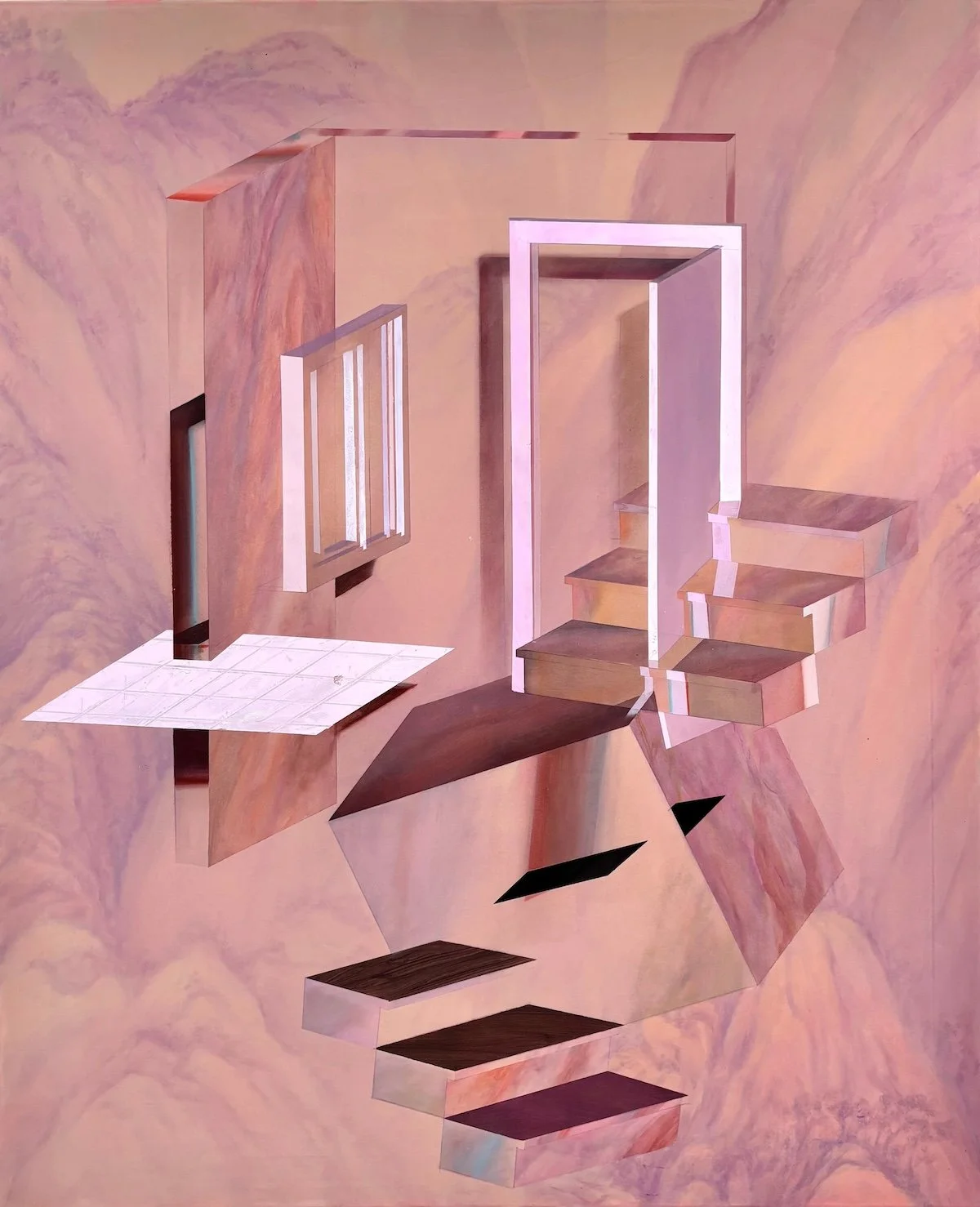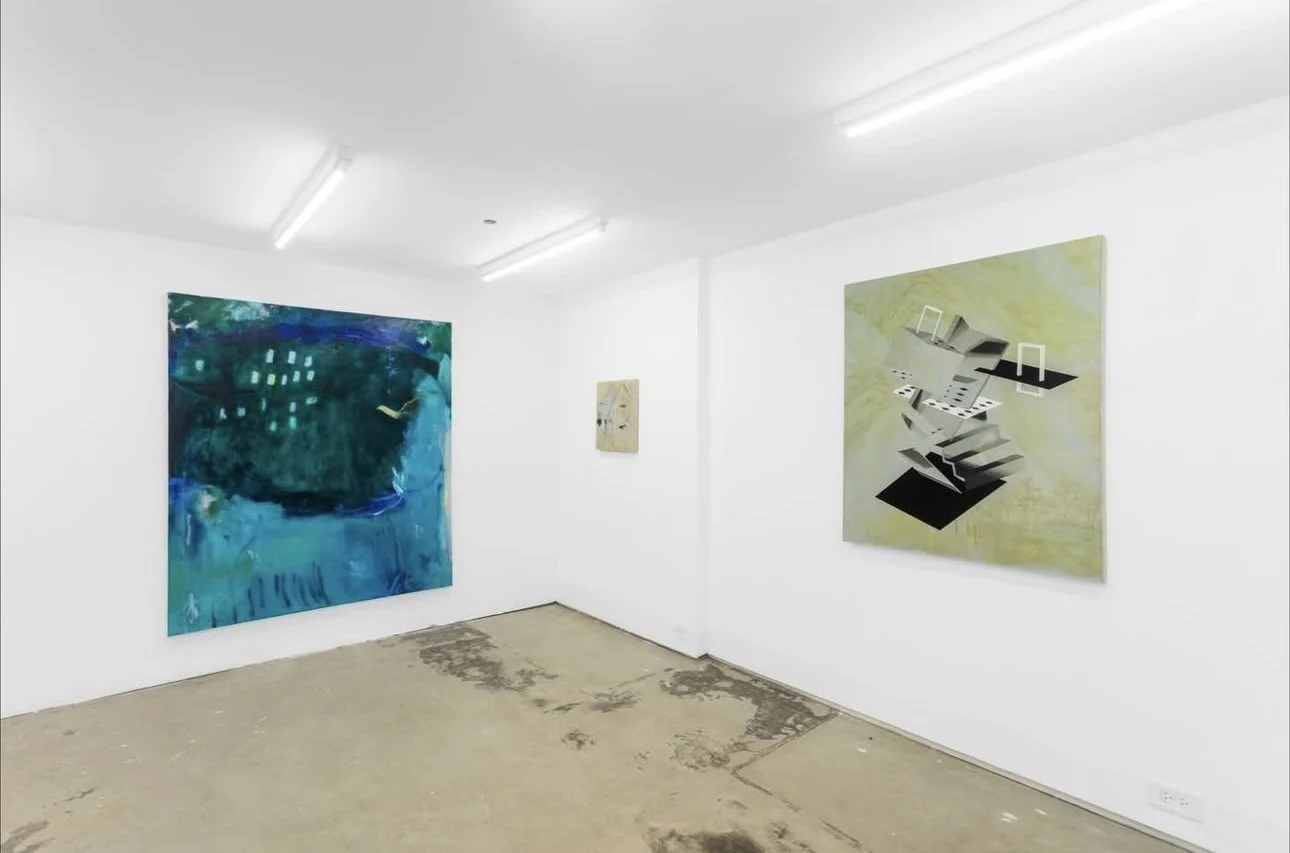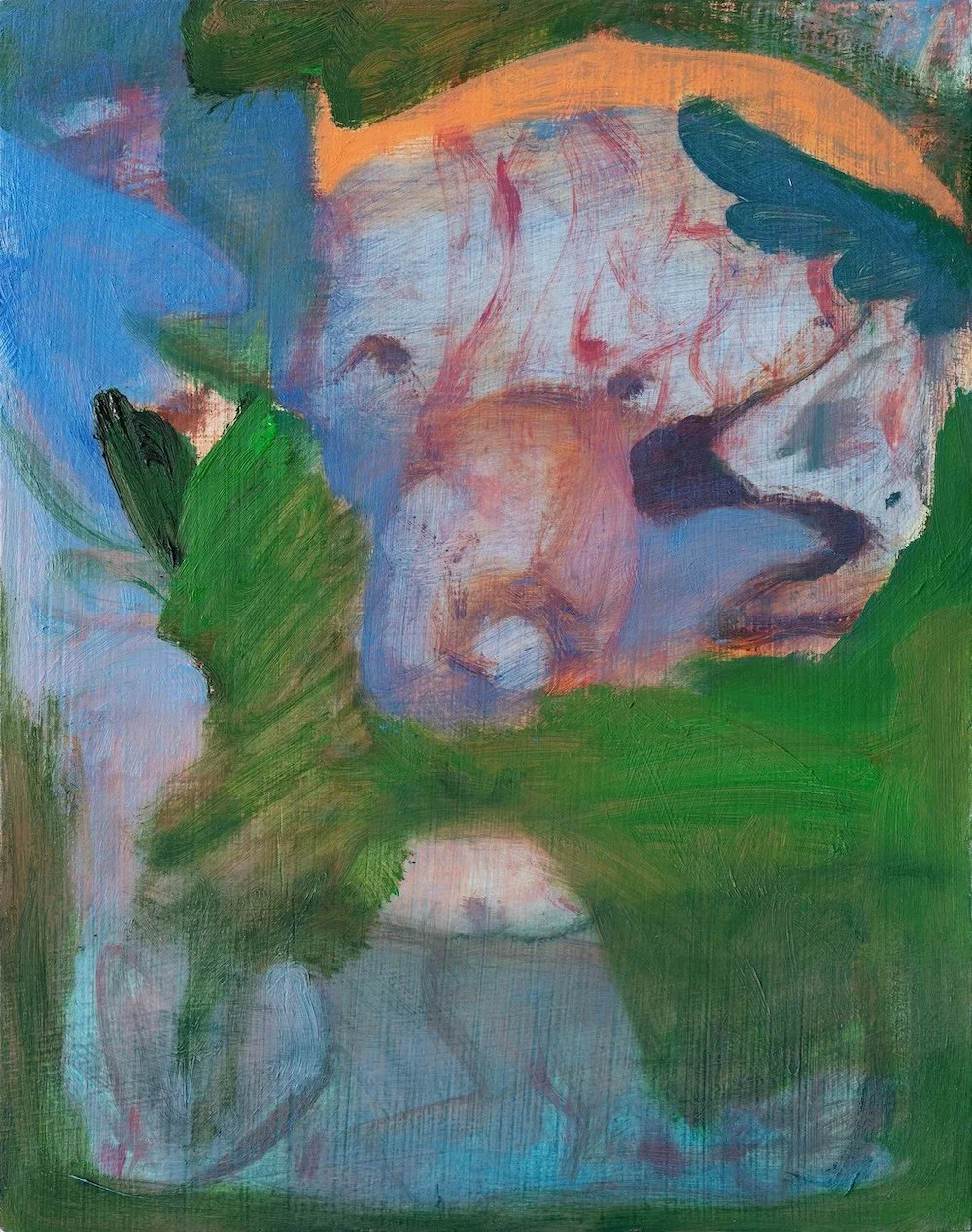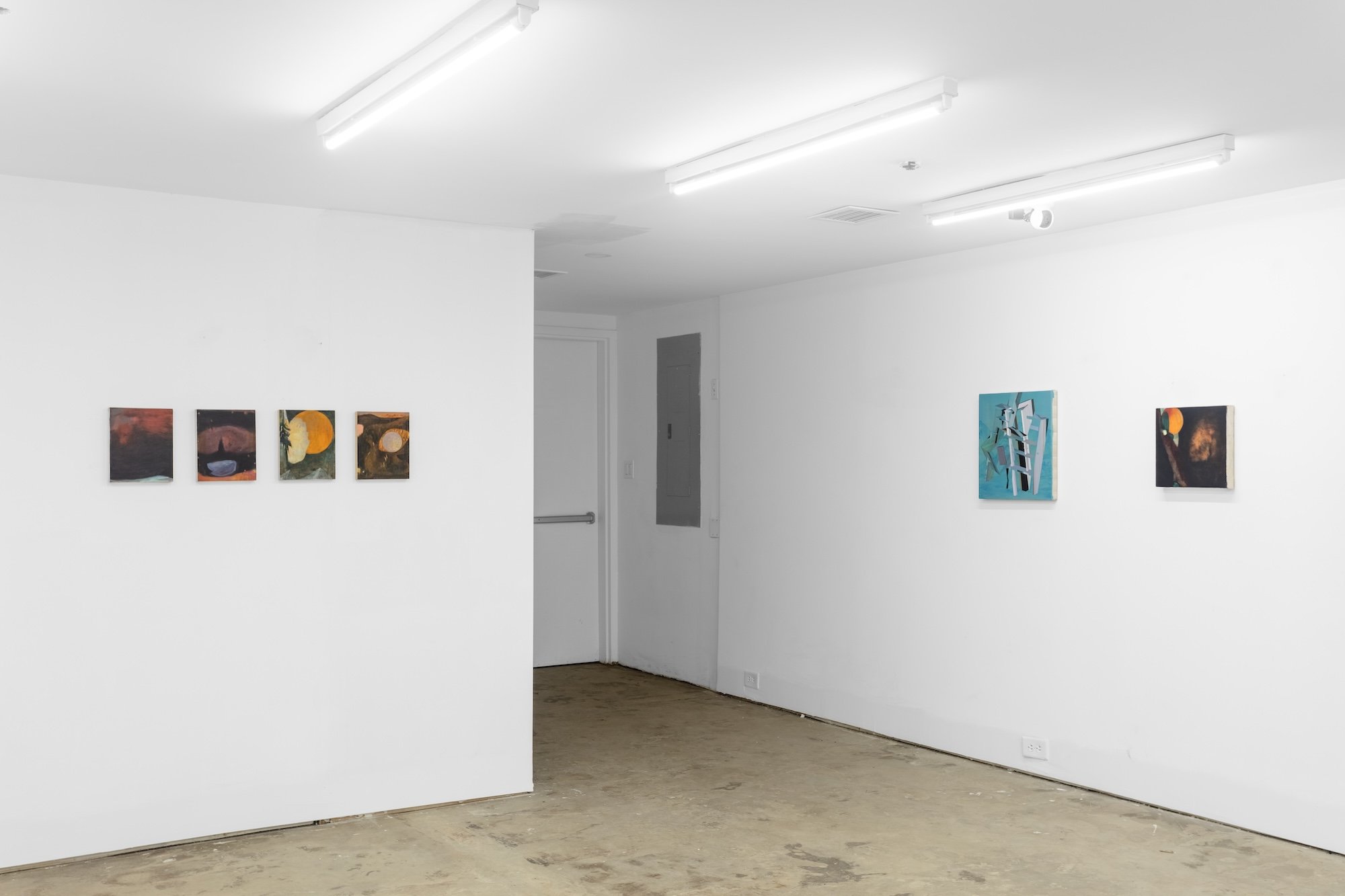Review: “The Time It Takes to See”
A new trap set by a dialogue among paintings slides into place on the lower level of LATITUDE Gallery. Curated by Shuang Cai, Ye Cheng and Xinran Guan’s duo exhibition The Time It Takes to See constructs an unlicensed underground amusement ground. The viewer emerges slightly exhausted after playing along; the rhythm of the air refuses to return to its usual balance—moisture clings to you, pulled downward by gravity, toward something deeper. The curatorial statement gives no warning about this forced-yet-natural mode of amusement; it merely gestures, with restrained politeness and a sly undertone, toward an expectation of time-lag. The hint is both considerate and cunning, suggesting that the exhibition may be a continuous curve of halts, returns, passages, and slips.
Ye Cheng’s paintings, at first glance, carry a kind of astringent strangeness (like hearing the noise of fingernails scraping across a chalkboard). A cubic cut on a stone peak opens like a door; stepping onto a stairway of mountain imagery, one has no idea where it leads, and it even shines—perhaps this is nature lubricated by human civilization? Looking again at the title, Happy excursion series—a delirium of wandering mechanical landscapes—the smoothness feels intentional, even slightly accusatory, prompting the viewer to either distrust it or capitulate to its artificial hospitality. The entire series reads like a safety manual disguised as a utopian handbook—danger concealed, pleasure mechanically processed.
At this point, a faint, tragic sentiment does emerge: nature becomes a structural pivot, and the blocks feel arranged to trap and hold a precise moment of light. The metallic remnants of human civilization, polished and lubricated, present a surface so bright it seems almost harmless, yet something faintly alarming leaks from underneath. The stairs and cubic cuts imply mechanisms that, like entrances to secret rooms, are ready to open or close automatically at any moment. As though waiting for that instant when we step wrong. An aesthetic dimension almost discordant with the mountain-and-water motif is embedded into the visual threshold of the painting; amusement and tragedy are in constant interplay contingent upon the same set of materials. Here, “play” becomes a desensitization exercise, always drifting with a slight regret at never being able to return to mountain-and-water in any genuine sense. The smoother and more traversable this “mountain amusement park” becomes, the more one senses a kind of loss. A landscape smoothed to the point of something close to pity. The title Happy Excursion still wanders through the viewing experience, yet it lands instead like a gentle misreading, as if the forest were mistaking human breath for wind. The further one moves into the scene, the less it feels like an excursion and more like mourning the landscape itself.
In contrast to Cheng’s work, Xinran Guan’s mode of play stands upright and fully extended. In each piece, the relationship between the painted narrative and the title completes a translation with a just-right balance—neither heavy nor light—eliciting a small, knowing smile, as if performing a somersault in place. Guan’s pictures contain large empty areas that are hard to ignore, like a palm that has been tightly clenched and then slowly turns pale, suspended in tension. The bodily sensation is similar to playing a freeze-and-move game like “Red Light, Green Light” with the viewer. The waves—visually as thin as gauze—carry a density closer to milk and the downward weight of a waterfall. The semi-solid gleam appears innocently bright. Light flowing out from the seam between half-dream and half-wake states settles into the winding textures of her brushstrokes, where it is held and soothed. Slow perception and a sense of turbulent motion are wrapped into each tide, pushing further into the dream world.
Guan’s dense brushwork carries a kind of authority—capable of weaving waves and weaving dreams. She is, truly, a deft practitioner of synesthetic rhyme. These unnamed “large expanses,” delicate yet drifting, sway like swings. Every time the viewer wanders along with them, they gradually draw closer again, gathered back into that tense, blanching palm. Under the inertia of one wave after another, the viewer—lured forward step by step—can roughly guess that the game rules are not simple. You cannot be entirely dull, falling asleep in the cradle of the image, nor can you be too clever, stringing together meanings too quickly—otherwise you will miss the hundreds of subtle riddles embedded inside. Hesitation, therefore, finds its rightful place here and becomes a strategy.
One side of the exhibition offers a metallic mountain labyrinth; the other, an arc of a wave that has not yet fallen. Taken together, the exhibition breathes in intentionally mismatched rhythms—an uneven alternation of inhaling and exhaling. Amusement distills itself into a cognitive method, operating as a quiet, enduring friction rather than levity. The space within the works carries a measured restraint, a kind of autonomous will that playfully “corrects” the viewer’s habits of seeing and spatial sensing. The two artists’ works interact with nearly conspiratorial precision. Their agreement on an underlying narrative structure appears settled long before the viewer enters. The viewer toggles between two lures—advancing and pausing—until eventually accepting the impossibility of quick reading and becoming comfortable with the pervasive, low-grade crisis. Much like Cheng’s landscapes, one must ultimately yield to the constant micro-corrections the works insist upon.
The Time It Takes to See is on view at LATITUDE Gallery from November 7th to December 13th, 2025.





